Helen Hunt, 60, Stuns During Her Latest Appearance, and Her Lips Become the Center of Attention

Meganeuropsis was a giant dragonfly that lived on our planet almost 300 million years ago. It was about the size of a modern-day falcon, with a wingspan as long as your leg. It had long and sharp claws that it used to catch food and for protection. They could even grab small animals and carry them through the air.
Their speed and maneuverability made them formidable hunters. Meganeuropsis is the most giant insect ever found on Earth. Scientists believe it might have reached this colossal size because there used to be more oxygen in the air.
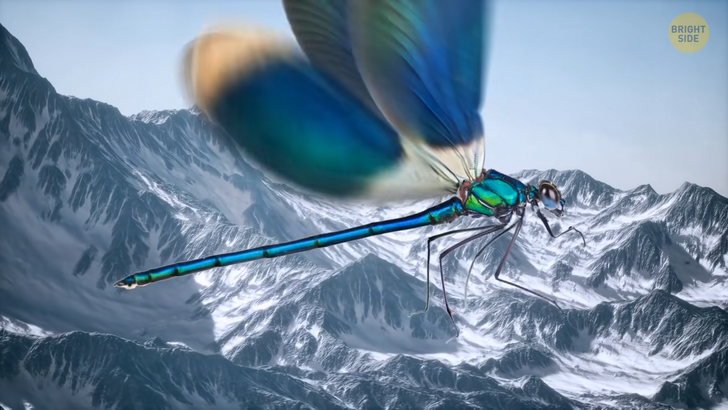
There were other gigantic insects that lived before the dinosaurs too. Some ancient ants could grow to the size of a hummingbird! And if that isn’t scary enough, they could also spit acid, like something out of a movie. These ants lived in large colonies, and their anthills were several times bigger than the ones we see today and could resemble a bear’s den.
This thing is an Arthropleura, an ancient ancestor of the giant millipede. This monster dwarfed the last two animals, growing to the length of a car! It lived in rain forests, and it could move at great speed. Imagine being chased by one of these! Fortunately, Arthropleura weren’t carnivores like today’s centipedes; they only ate plants.

Another reason the insects grew so big back then is that there was less direct competition. They could evolve and grow without being eaten by more successful animals. Brontoscorpio lived about 400 million years ago and could reach 3 feet [3 ft (1 m)] in length. That’s 15 times longer than modern scorpions! And unlike modern ones, it had not two but four claws!
This amazing creature could also breathe on land and underwater. That’s because it had both gills and lungs. It’s believed that these guys were some of the first to evolve and change their habitat from water to land.

Now, onto a far stranger marine animal — Anomalocaris. It’s thought to be the very first predator to live on our planet. It was half the length of a human, their eyes had color vision, and they were likely the most advanced of any living organism, half a billion years ago!
They used their sharp claws and mouthparts for hunting trilobites, crabs, and sea scorpions. It’s possible that Anomalocaris was what eventually pushed crabs and scorpions onto the land. They might not look very similar, but Anomalocaris was also an ancient ancestor of modern crabs.
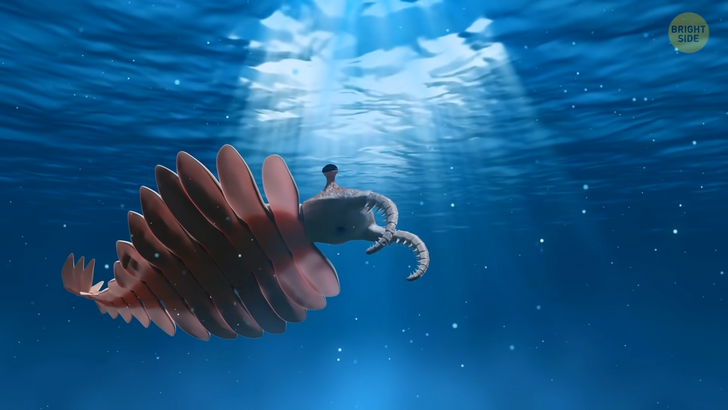
Dunkleosteus was an enormous ancient fish. These guys were half the length of a school bus and weighed the same as a small car. They had no teeth but evolved to use the bone plates on their jaws as a replacement, leading to their crazy appearance. This allowed them to have the biting power of a modern Mississippi alligator.
Most impressively, it could close its jaw multiple times in less than a second. This created a powerful flow of water right into its mouth. Smaller fish would just get caught in the current and pulled right into a Dunkleosteus’ mouth. Their skull was heavily protected by bony armor. It was like it was wearing a helmet. This protected it from almost any strikes and made it the apex predator of its time.
Akmonistion is the ancestor of all sharks in existence, living around 340 million years ago. No one knows why but, in addition to the usual shark fin, it had something that looked like an anvil on its back. Another feature of the Akmonistion was a massive spike on the underside of its body. It was very sharp and covered with many teeth.
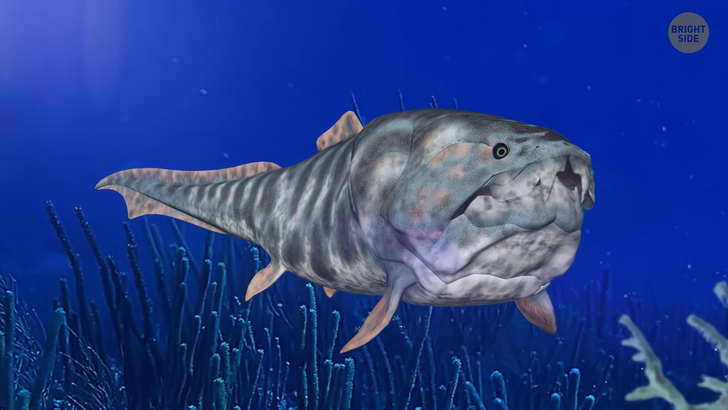
Tiktaalik were some of the first animals to set foot on land. It had gills and scales, like a fish, but it also had some of the features of land animals. It looked a bit like a cross between a fish and a lizard. Its front and back fins began to turn into limbs, so it could crawl along shorelines, and it developed lungs as it spent more time out of the water. This weird fish may be the ancestor of pretty much every modern land animal today, including us!
Back to land, this is a Dimetrodon. It looks like a lizard, but it’s actually a synapsid — a close relative of mammals. It was the size of an alligator and had a giant sail on its back. Scientists aren’t certain, but it’s believed that the Dimetrodon used this sail to get heat from the environment faster. It also helped them camouflage themselves in the tall grass. These guys are often confused with dinosaurs. But they disappeared 40 million years before the first dinosaurs appeared. Over time, synapsids evolved into full-fledged mammals. And if we go further down this chain, we’ll find out that humans evolved from these guys, too.
Dinocephalians. The name of these guys literally translates as “scary-headed.” This is because, in the process of evolution, their skulls became much thicker. These creatures were usually 19 [ft (6 m)] feet long and weighed the same as a car. Some of them had long fangs like a saber-toothed tiger, but these giant lizards were herbivores.
That doesn’t mean they were completely peaceful and docile, though. Scientists believe they fought within their species. They smashed their heavy foreheads into each other, like rams do now. Dinocephalians existed at a time when all our continents were still connected in a supercontinent called Pangaea.
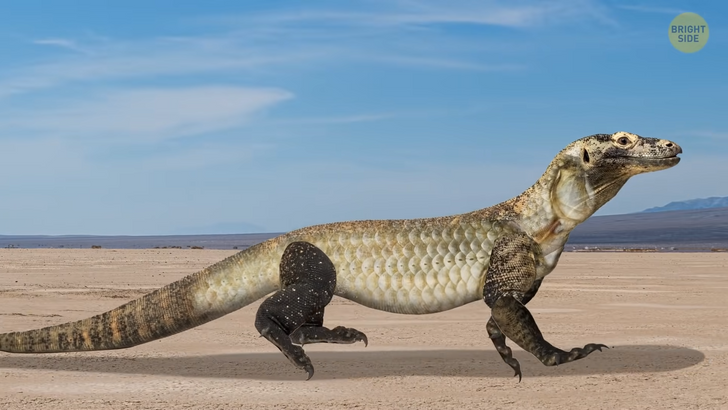
Gorgonopsia looked a little like Dinocephalians, only these guys were carnivores. They were about the size of a wolf, but they spent a lot of time in water, too. They usually lived on coastlines and could dive into the sea looking for food. They were also the first predators that could run fast. This is one reason why Gorgonopsia ruled the world about 265 million years ago.
Later, these species mysteriously disappeared, leaving the dinosaurs to dominate the Earth. The cause of the mass extinction about 240 million years ago is unknown. But the second event that caused the extinction of 95% of all living organisms on Earth was a giant meteorite.
The oldest tree remains are 385 million years old. Archaeologists found them inside a rock, where there were traces of the roots of many species of trees. These ancient trees evolved and began to turn the carbon dioxide in the air into oxygen. Gradually, they created the atmosphere we have now.
This is the oldest winged insect in the world — Rhyniognatha. It’s about 400 million years old. And there’s still debate about the way it lived. Supposedly, it fed on plants, but it also might have eaten other animals.
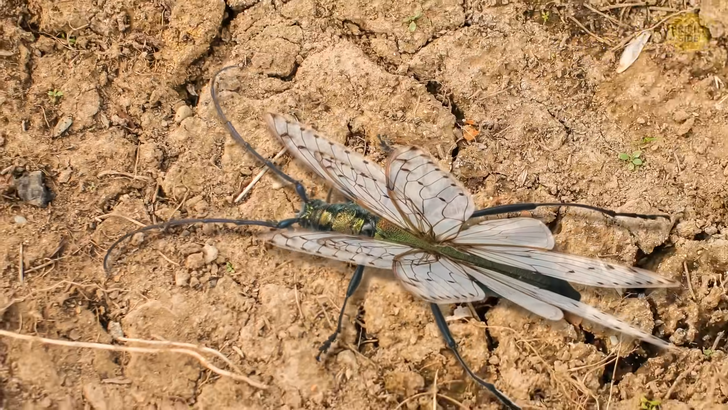
The oldest species of millipede is Pneumodesmus newmani. It may have been the first living organism to breathe on the barren Earth, around 400 million years ago. This little guy was only about as long as a seed, but we only have one fossil, so they might have grown a bit bigger. Pneumodesmus might be a distant relative of all of the millipedes and centipedes that exist today.
The further we go back in time, the more bizarre the living organisms look. 480 million years ago, Aegirocassis coasted through the ocean. For its time, it was the largest animal on the planet, reaching 6.6 [ft (2 m)] feet in length. Fortunately for other sea creatures, it wasn’t a scary hunter. It ate the same way that the blue whale does today, swallowing loads of water, so it could catch all of the tiny things living in it.
Dickinsonia lived 550 million years ago. These floating ovals varied a lot in size. Some could be the size of a fingernail, while other species were as big as a kitchen plate. The largest Dickinsonia may have been as wide as a stingray. These animals are so primitive that they didn’t even have a skeleton. Some scientists thought it wasn’t even an animal but a fungus, but that was later disproven.

Charnia was another animal that scientists originally thought was a plant. They believed that it was just the leaf of something like a fern. They realized that it was an animal when it was found that Charnia lived deep underwater, where photosynthesis is impossible. These guys swam near the bottom of the sea and fed on nutrients from the water.
Instead of a traditional digestive system, these things had filters. They ran water through them to catch food in it, like the Aegirocassis. The first living organism is thought to have appeared about 4.2 billion years ago.
When the oceans first formed, they were filled with things needed for life to exist. Under high temperatures, this matter began to interact and join together, forming the first living organism. This is why we look for planets with liquid water. We know life on Earth started with water, so many people believe that water is the most important factor in the origin of life.











